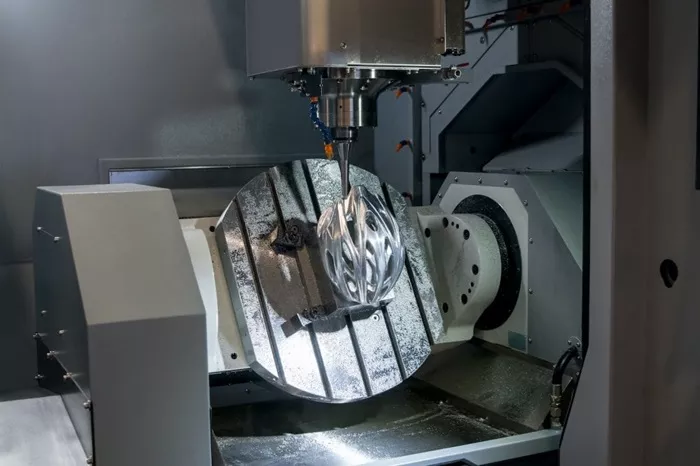Computer Numerical Control (CNC) turning machines are essential in modern manufacturing. They perform precise cutting, shaping, and drilling of materials such as metal, plastic, and wood. The number of axes a CNC turning machine has determines its flexibility, precision, and complexity in machining operations.
Axes in CNC machines represent the directions or paths in which the cutting tool or workpiece can move. Understanding the maximum number of axes a CNC turning machine can have is critical for engineers, machinists, and manufacturers to select the right equipment for their needs.
Basic Concepts of CNC Machine Axes
What Are Axes in CNC Machines?
Axes define the directions along which the machine’s components move. Typically, CNC machines use Cartesian coordinates—X, Y, and Z—to describe linear movements. Rotational movements are described using additional axes labeled A, B, and C, which rotate around the X, Y, and Z axes respectively.
Linear and Rotary Axes Explained
Linear Axes: Movement in a straight line along X, Y, and Z directions. These are fundamental for positioning the tool or workpiece.
Rotary Axes: Rotational movement around a linear axis. For example, the A-axis rotates around the X-axis. Rotary axes add versatility by enabling complex angular machining.
Standard Axes in CNC Turning Machines
Typical 2-Axis CNC Turning Machine
Most basic CNC turning machines operate with two primary axes:
- Z-axis: Controls the movement of the tool along the spindle’s length, enabling turning operations.
- X-axis: Controls radial movement, adjusting the cutting tool’s distance from the spindle center.
This 2-axis configuration allows for simple cylindrical shapes to be machined with precision.
3-Axis CNC Turning Machines
The addition of a third axis typically introduces a tool turret or a secondary tool holder that can move linearly or rotate. This allows for more complex operations such as grooving or threading without repositioning the workpiece manually.
Advanced Axes in CNC Turning Machines
Live Tooling and the Y-Axis
Modern CNC lathes often include live tooling, which are powered tools integrated into the turret. This enables milling, drilling, and tapping in addition to turning.
The inclusion of a Y-axis adds lateral movement perpendicular to the X- and Z-axes. This axis allows off-center milling and drilling, increasing the machining capabilities significantly.
Rotary Axes (C-Axis) on CNC Turning Machines
The C-axis refers to the rotary movement of the spindle or the workpiece around its centerline. This axis is crucial for indexing, angular machining, and precise positioning of the part during live tooling operations.
In many high-end CNC turning machines, the C-axis is integrated to allow simultaneous rotary and linear movements, enhancing multi-task machining.
Maximum Number of Axes in CNC Turning Machines
Common Configurations and Their Limitations
While traditional CNC turning machines usually feature 2 or 3 axes, advanced models can include several more:
- Linear axes: X, Y, Z
- Rotary axes: A, B, C
In principle, a CNC turning machine can have up to 5 or even 6 axes, but practical constraints often limit the design.
Typical 5-Axis CNC Turning Machine Setup
A 5-axis CNC turning machine may include the following axes:
- X-axis: Radial linear movement
- Y-axis: Lateral linear movement
- Z-axis: Axial linear movement
- C-axis: Rotary movement of the spindle/workpiece
- B-axis or A-axis: Rotary movement of the tool turret or tool holder
This configuration allows simultaneous multi-directional cutting, enabling complex geometries and reducing production time.
Emerging 6-Axis CNC Turning Machines
Some cutting-edge CNC turning machines incorporate a sixth axis, often an additional rotary or linear axis. This might include:
- A second rotary axis on the tool turret
- A movable tailstock axis
- A secondary linear axis for sub-spindle movement
Six-axis machines enable even greater machining flexibility, allowing for multi-sided, multi-process manufacturing without repositioning the workpiece manually.
Factors Influencing the Maximum Number of Axes
Machine Design and Manufacturer Limits
Manufacturers design CNC turning machines to balance complexity, cost, and reliability. Each additional axis increases the machine’s mechanical complexity and control system requirements. As a result, not all machines can support maximum axes.
Control System Capability
The CNC controller must be capable of interpreting and coordinating multiple axes simultaneously. High-end controllers from brands like Siemens, Fanuc, and Mitsubishi are designed to handle up to 6 axes or more, but this depends on software and hardware configurations.
Application Requirements
The choice of axes depends heavily on the parts being produced. Simple parts require fewer axes, while complex aerospace or medical components benefit from machines with more axes.
Cost and Maintenance Considerations
More axes mean higher machine costs and more maintenance. Manufacturers must weigh the productivity gains against these costs.
Advantages of Multi-Axis CNC Turning Machines
- Increased Precision: Multi-axis machines reduce setup errors by completing multiple operations in one setup.
- Complex Geometry: Ability to machine intricate shapes that would be impossible with fewer axes.
- Reduced Lead Time: Multi-axis machining cuts production time by integrating multiple steps.
- Improved Surface Finish: Continuous tool engagement results in smoother finishes.
Conclusion
The maximum number of axes a CNC turning machine can have typically ranges from 2 in basic models to 5 or 6 in advanced, multi-tasking machines. The exact number depends on machine design, control system capabilities, and the complexity of parts being produced.
In modern manufacturing, 5-axis CNC turning machines have become the industry standard for high-precision and complex parts. The integration of live tooling, Y-axis movement, and rotary axes provides unprecedented flexibility. Meanwhile, emerging 6-axis machines push the boundaries further, allowing even more complex and efficient machining processes.
For engineers and manufacturers, understanding these capabilities helps in selecting the right CNC turning machine to meet production demands while balancing cost, precision, and operational efficiency.

